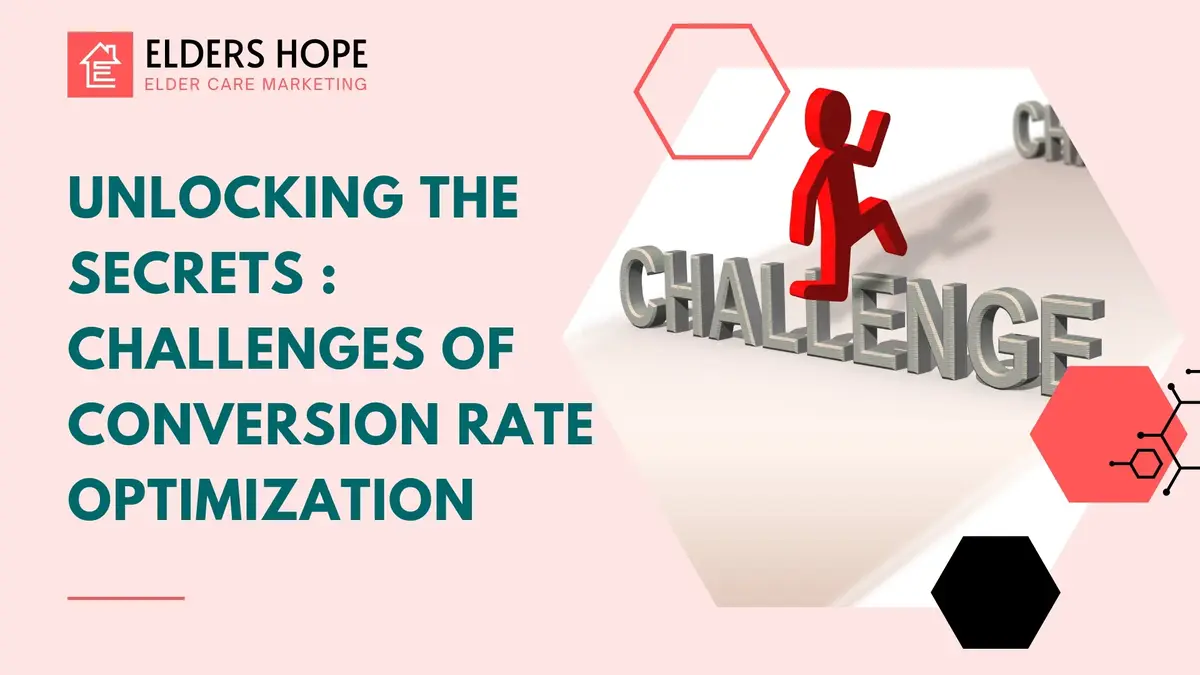Get your healthcare website


In the fast-paced digital realm, Conversion Rate Optimization emerges as a pivotal strategy for agencies striving to maximize their on-line capability. However, amidst the charm of increased conversions lie complicated demanding situations demanding attention.
Implementing CRO can present several demanding situations for agencies. Here are a few difficulties faced during the implementation method
Determining the most relevant metrics to track and optimize may be challenging. Different businesses may have varying conversion desires, consisting of sales, sign-ups, or downloads. Selecting the proper metrics to recognition on consideration and understanding of the business objectives.
Analyzing user behavior to discover insights into why site visitors are not converting can be complex. It involves decoding data from various resources along with web analytics, heatmaps, and user recordings. Understanding the motivations, preferences, and pain points of users requires continuous research and analysis.
Developing an powerful testing method entails deciding on the proper factors to check, inclusive of headlines, call-to-actionbuttons, or web page layouts. Designing A/B tests that yield meaningful results and avoiding common pitfalls like pattern pollution or inconclusive effects requires expertise and experience.
Limited resources in phrases of budget, time, and employees can avoid the implementation of CRO tasks. Conducting experiments, optimizing internet website element, and iterating on enhancements may additionally require investment in tools, technology, and skilled experts.
Achieving buy-in and cooperation from different departments within the organization, including marketing, design, and development, may be tough. Alignment on priorities, useful resource allocation, and decision-making strategies is critical for a success CRO implementation
Addressing technical limitations together with website overall performance troubles, compatibility across devices and browsers, or limitations of the content management system (CMS) can hinder CRO efforts. Ensuring seamless user experience and easy navigation are critical for driving conversions.
CRO is an ongoing system that requires continuous new release and optimization. Maintaining momentum and retaining stakeholders engaged over the long term may be challenging, particularly if initial results aren’t as expected or if competing priorities emerge.
Ensuring to data privacy regulations which include GDPR or CCPA at the same time as accumulating and analyzing consumer information poses additional demanding situations. Ensuring compliance with legal requirements and maintaining trust accept as true with users are critical factors of CRO implementation.
Search engine and social media algorithms frequently go through updates, impacting organic and paid traffic sources. Adapting CRO techniques to deal with algorithm modifications and maintaining visibility and relevance in search engine results pages (SERPs) and social media feeds requires agility and continuous monitoring.
Conversion rate optimization (CRO) involves improving the percentage of website visitors who take a desired action. Here’s a basic formula to calculate conversion rate:
Conversion Rate = (Number of Conversions / Total Number of Visitors) * 100
For example, if your website had 500 visitors in a month and 50 of them convert as a client, the conversion rate would be:
Conversion Rate = (50 / 500) * 100 = 10%
This means that 10% of your website visitors converted into clients during that time period.
To optimize conversion rates, you can experiment with various elements on your website, such as the design, layout, call-to-action buttons, forms, and messaging.
A/B testing is a common technique where you compare two versions of a webpage to see which one performs better in terms of conversions. By continually testing and refining your website, you can improve your conversion rate over time.
CRO presents several hurdles. Identifying key metrics, understanding user behavior, and crafting effective testing strategies are important. Resource constraints and technical limitations often demand innovative solutions, at the same time as organizational alignment fosters collaborative success.
Maintaining momentum and prioritizing data privacy are essential for sustained growth. Adapting to algorithm changes is necessary for staying relevant.
Calculating conversion rates involves dividing conversions by total visitors and multiplying by 100. Addressing these challenges requires a combination of strategic planning, technical expertise, cross-functional collaboration, and a dedication to continuous improvement.
By overcoming those limitations, businesses can unlock the entire potential of conversion rate optimization to drive growth and maximize ROI.
Start optimizing your conversion rates today and unlock new opportunities for success! Important links are bellow.
How Can Conversion Rate Optimization Help Your Business?
Why Is Conversion Rate Optimization Important for Homecare Business?
When to Use Conversion Rate Optimization: Boost Your Conversions Today
CRO is a strategy to boost the percentage of website visitors who take desired actions, like making a purchase or signing up.
Conversion Rate = (Number of Conversions / Total Number of Visitors) * 100. For example, if 50 out of 500 visitors convert, the rate is 10%.
Through strategic planning, technical expertise, collaboration, experimentation, data privacy compliance, and agility in adapting to changes.
It maximizes ROI from digital marketing, boosts revenue, improves customer acquisition and retention, and drives growth.
Get a free consultation on website design and marketing.